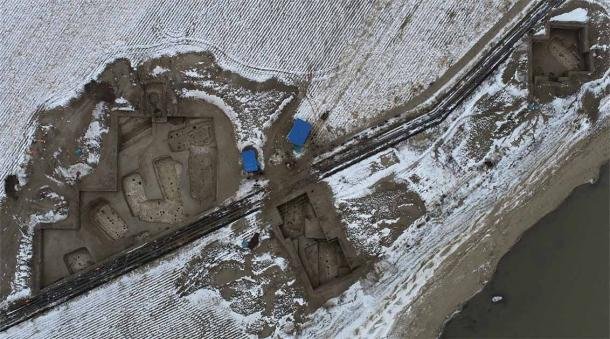In a chilling revelation, researchers in China have uncovered the largest Neolithic headhunting massacre in history, shedding light on a gruesome event that transpired around 4,100 years ago. The discovery was made at the Honghe site, where a mass grave containing 41 headless skeletons was unearthed, marking a significant breakthrough in understanding the violent practices of ancient civilizations.
The Honghe site has been under investigation since its initial discovery in the 1990s, with six excavations conducted to date. In the latest effort, researchers unearthed a total of 68 skeletons, including 41 without heads, in two houses and three tombs. The victims, all women and children, displayed cut marks across their neck vertebrae, with some exhibiting V- and U-shaped cuts on the second vertebra. The assailants used bone-handled knives with stone blades, showcasing a uniformity in the perpetrators' techniques and weapons.
The discovery challenges the notion of headhunting as a rare and isolated phenomenon in ancient China. The presence of deliberate decapitation marks on all the victims indicates a conscious head-hunting behavior, suggesting that this act was not an isolated incident but rather a part of a larger pattern.
An aerial view of the burial site. Photo: Qian Wang/Texas A&M
The study, published in the Archaeological and Anthropological Sciences journal, employed visual inspections and imaging techniques to identify signs of decapitation. Shockingly, the researchers found that 32 of the 41 beheadings occurred in a single horrifying event, pointing to a coordinated and large-scale act of violence.
Headhunting was a common practice in various Asian countries, often driven by a combination of ritualistic, social, and territorial motives. Tribes engaged in headhunting to gain spiritual power, demonstrate dominance over rival communities, and appease ancestral spirits. In this context, the researchers propose two theories for the Neolithic headhunting massacre at the Honghe site.
Four skulls in a pit outside the burial house. Photo: Qian Wang/Texas A&M University School of Dentistry
The first theory suggests that the massacre may have been a result of an interpersonal conflict with a high level of cruelty. It is possible that rival groups attacked the settlement, specifically targeting women and children. Alternatively, the researchers propose the existence of a ritualistic aspect, where heads of enemy tribes were sought after for a specific ritual meaning, potentially to conquer or possess the soul and energy of the enemies.
The second theory revolves around settlement rivalry, as evidenced by defensive trenches surrounding the site. The choice of women and children as victims could have been a strategic move to cause maximum outrage and cruelty, aiming to destabilize the Honghe community. The researchers speculate that the men of the settlement may have been away during the attack and returned to find their loved ones massacred, leading to the decision to bury them in the houses before abandoning the settlement.
The discovery at the Honghe site provides a chilling glimpse into the violent past of Neolithic China, raising questions about the motivations and societal dynamics that led to such brutal acts. The researchers hope that further exploration and analysis of archaeological sites will contribute to a deeper understanding of ancient civilizations and the complex factors that shaped their practices and beliefs.








